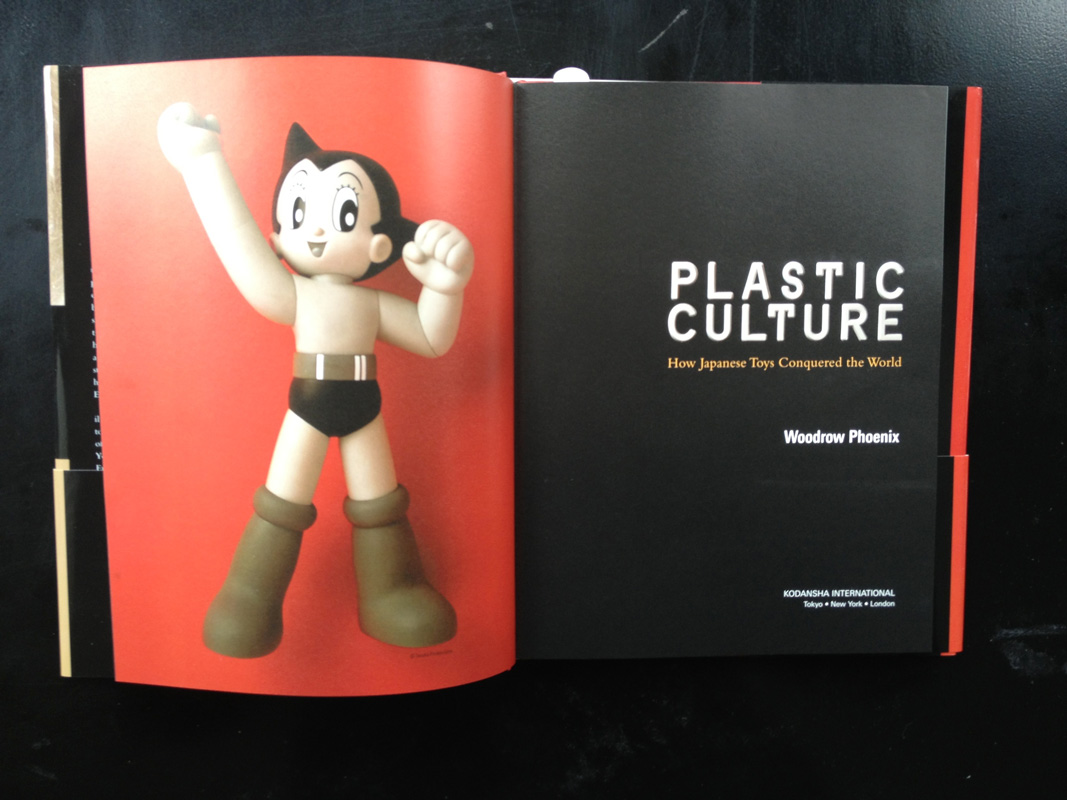Plastic Culture
Published in 2008 when the designer toy fever was at its height. Plastic Culture is the only book on Urban Vinyl to feature original interviews with many of the prime movers of this phenomenon: Takashi Murakami, Yoshitomo Nara, Presspop, Bounty Hunter, Eric So, Michael Lau, Junko Mizuno and Sanrio.


I remember being aware of the Designer Vinyl wave almost at the beginning, around 1999, when I saw a toy that had been designed by UK artist James Jarvis, to promote a clothing label here in London called Silas. The idea of it amazed me. A toy that looked 'real', properly finished and solid but with an indie style and no affiliation to a big manufacturer or television show. It just... was. Finding information in those days when the internet was not the all encompassing database that it is now took much longer and relied on knowing the right people. But I knew it was produced in small quantities, from an actual toy factory in Japan, with help from another independent toy producer. I filed that little factoid away.

The designer vinyl bubble began to expand through the millennium, part of a global youth movement replicating itself in key locations. I was buying the toys that appealed to me and keeping up with the excitement of this new modern artform. I watched it go mainstream and explode with hundreds of people joining in making their own contributions to the scene. When a book finally appeared promising to cover this happening from the inside, I read it eagerly. But I was disappointed. There was barely any analytical approach to the subject at all. It was a just a catalogue. It was a casualty of being too close to a market where everyone is pushing something, and nobody wants to evaluate anything because that might upset somebody.
The books that came after it were the same - regurgitated press releases, where every toy was the Best Toy Ever, existing in a contextless vacuum. So it seemed to me there was a job still to be done. I talked about it to Cathy Layne, an editor at Japanese publishing house Kodansha. Someone needs to write properly about this movement, I told her. Seeing how immersed I was in the subject, she suggested I write it myself. I said no at first, but after I did an outline of what I thought a history and overview of Designer Vinyl should contain, I realised that I could do it. After all, I knew where to start looking and who to talk to. I wasn't selling a product so I could evaluate things based on what they did and how they worked. I love toys, so I decided to examine why that was and see where it led. It led to Japan. So that was where I went.
I spent a month in Tokyo working with my editor, researching and interviewing the artists face to face, They were all sincere and fervent about what they were doing. They wanted to make their ideas real. Making money too was the bonus that allowed them to create more toys. I deliberately didn't mention prices and money in Plastic Culture because I wanted to show why toys have emotional and personal value to adults as well as children and how that works, in a way that a non-collector could understand. Because obsession is where the truly original work comes from. And it's really important to see how without that as a starting point there IS no collector market anyway.
Everyone I interviewed understood the book was a cultural document and not about buying and selling 'product', and that was why they responded so generously. Even though their work expresses it so differently, they all started from a shared aesthetic and talking to them seriously and respectfully about their dreams and motivations rather than about their place in the market allowed that to come out.















I was proud to get 'superflat' artist Takashi Murakami to give me such considered answers. I bonded with Yoshitomo Nara over a Snoopy hairdryer. Iwanaga Hikaru and I debated which cereal was best: Lucky Charms or Captain Crunch? Yasutaka Minegishi and Maki Hakui from Studio Presspop were a goldmine of obscure indie factoids. Junko Mizuno showed me her favourite toys. Sanrio's head designer Yuko Yamaguchi told me Hello Kitty secrets; their first collaboration was with Paul Frank. She drew his Julius the Monkey and Paul Frank did a version of Hello Kitty, who he found very difficult to draw!











Plastic Culture made links that nobody else had, contains interviews with people that nobody had thought to do and my original research has formed the basis for many other books and articles. The Japan Times called Plastic Culture “An incredibly stylish book that has obviously been created with the same passion as that expressed by the collectors and designers it covers” and I couldn't have been more pleased. They got it.
Kodansha closed their International imprint a few years ago and Plastic Culture is out of print. But it might be time for a new, updated edition...
PLASTIC CULTURE led a few years later to FELT MISTRESS: CREATURE COUTURE.